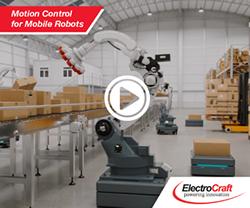RPA or systems that are augmented with a form of automation — even software based — will completely transform the world of business as we know it. They have a place in nearly every industry in existence and can help improve output and efficiency ...
Top Article of 2019 - Advantages of Robotic Systems in Automation
Megan Ray Nichols | Schooled By Science
There was a time when automation technologies, or more specifically robotic process automation (RPA) was too new and too mysterious to implement. That is, the associated costs remained somewhat unknown as did the benefits offered.
Today, that is no longer the case. In fact, the reality is quite the opposite. Robotic process automation can offer so many benefits and cost advantages it seems almost silly not to implement it, at least in some small manner.
For starters, it can help free human laborers from repetitive or rote tasks, allowing them to dedicate their talents and expertise to more deserving duties. But that’s just one of many benefits offered.
Here are some of the other advantages you can expect to see from adopting robotic systems in automation, and similar machine-driven technologies.
Lower Costs
In addition, to cutting operating costs and improving efficiency, robotics can be used to replace repetitive tasks that human laborers might otherwise be doing. This allows for cost savings in wage and salary costs too.
RPA vendors estimate a cost savings of 20 to 60 percent when deploying such technologies. That alone is enough to make the move to more automated systems.
Efficiency and Speed Improvements
Robots never grow weary, and they never get burnt out on repetitive duties. In fact, the only thing that can slow them down is a maintenance issue or hardware malfunction. So long as they are properly serviced — with preemptive maintenance strategies no less — they can run continuously, with minimal loss in performance.
McKinsey and Company estimate that additional labor productivity of RPA will soon equal the output of 110 to 140 million workers. That’s not just monumental, it’s game-changing for any industry or provider that is planning to deploy RPA.
Improved Analytics and Better Data
Realistically, you can’t track much data pertaining to human workers. Sure, you can measure their output and productivity in a variety of ways, but the information you collect is not always reliable either.
It’s the complete opposite with robotics and advanced automation systems. As they work, they collect data about anything and everything, which serves as an incredible database of information that you can put to use. It leads to better decision making with more successful outcomes. It reveals a lot more about your processes and it can help you unlock new avenues of improvement.
Essentially, the more data you have the better. But it also has to be accurate, error-free, and reliable and that’s something automated systems can definitely provide.
Versatility Boost
When you imagine robotic process automation, likely one of the first industries that come to mind is manufacturing and development. However, robots can be used across a wide variety of fields, including medical, IT and software, customer service, retail, and even transportation.
An RPA software robot can perform a list of over 600 actions in a given sequence. It can mimic even simple human actions, but it can take over more complicated and elaborate tasks, as well, in just about any field imaginable.
Any process, system, or platform that is rule-based and includes repetitive tasks or operations can be automated, in full, using robotics. That also means you — as a business — can be just as versatile. There is a nearly endless supply of opportunities in regards to how you can use the technology, and it can be scaled up — or down — as much as you need.
Customer Satisfaction Boons
Higher efficiency, better and more reliable output and improved accuracy translates to better products and services. In turn, this also leads to higher customer satisfaction rates because the quality of your work is better than ever. It’s a cyclical movement, if you will, as the benefits trickle down to every other process and operation your business handles.
Employee Productivity Increases
With many of the repetitive and boring tasks automated, it frees up your workers to handle more important and deserving projects. In fact, anywhere from 10 to 20 percent of human work hours are spent on rote tasks. That’s a huge allotment of time that could be freed up with automation and robotic systems.
Not to mention, when you free up your employees’ time you help them conserve energy, focus, and certainly improve their satisfaction. All of these things can help contribute to higher productivity, which is now spent on alternate work, elevating the business even higher.
Robotic Process Automation Is Transformative
RPA or systems that are augmented with a form of automation — even software based — will completely transform the world of business as we know it. They have a place in nearly every industry in existence and can help improve output and efficiency well beyond anything that’s ever been achieved before.
Transparency Market Research predicts that the RPA market will see a compounded annual growth rate of 60.5 percent worldwide, by 2020. The numbers are still adding up as such, and we’re not far from 2020 now.
It makes for an incredibly promising and exciting future. One that is sure to be advantageous for everyone involved.
The content & opinions in this article are the author’s and do not necessarily represent the views of RoboticsTomorrow
Comments (0)
This post does not have any comments. Be the first to leave a comment below.
Featured Product

